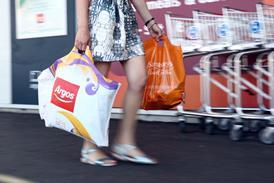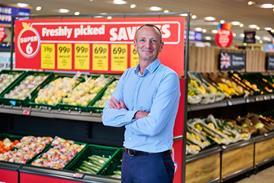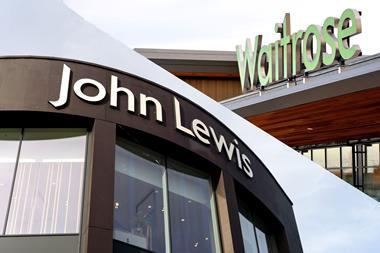PROMOTIONAL RESEARCH
With consumer confidence in flux and spending behaviours shifting, the Christmas Forecast report reveals what UK shoppers will buy, when they’ll buy it, and how much they plan to spend this Christmas
Retailers are holding out cautious optimism for what this year’s golden quarter may bring, with shoppers currently in a ‘wait-and-see’ mood, according to NIQ GfK consumer insights director Neil Bellamy.
GfK’s Consumer Confidence Barometer reveals the overall index score sat six points higher in July 2024 (-13) than in July this year (-19).
In September last year – the month leading into the crucial golden quarter – consumer confidence dropped sharply to -20. The 2024 autumn Budget further compounded pressure on the retail industry by significantly increasing operational costs, contributing to underwhelming trading performance. Only beauty, jewellery and electronics performed well, with data showing overall sales growth for the period reaching just 0.4% compared to 2023.
Retailers and consumers alike are therefore cautious as to what this year’s autumn Budget may bring – whether that be possible tax rises or increasing inflationary pressures.
But it’s not bad news for all sectors.
Public relations service CiJ Group founder Courtney Rogers says British boutique brands will be in a “strong position” to compete against large global retailers that are hamstrung by US tariffs and the rise in employer national insurance contributions. Retail Economics is also forecasting value growth across grocery, beauty and electricals.
Exclusive research conducted by Vypr for Retail Week, surveying 1,000 UK individuals in June 2025, found that only 20% of consumers are expecting to spend less this Christmas. Reassuringly, 40% plan to spend the same, 20% are set to spend more, and the remainder are unsure.
Here we highlight just some of the unmissable consumer insights revealed in the Christmas Forecast report.
What will shoppers buy?

The research asked shoppers which three categories they anticipate spending the most on this Christmas, with food, beauty and toys coming out on top.
When splitting out spend by age and gender, however, forecast spending trends differ quite substantially between different groups. For example, over a quarter of 18-24 year olds will be prioritising fashion spend, and those identifying as male are nearly twice as likely to spend on electricals.
While consumers aren’t expecting to put DIY and gardening, and furniture and flooring, at the top of their wishlists, for the younger demographics these are a higher priority. The biggest spenders on homewares, for example, are expected to be millennials, and Mintel garden retail market analysis reveals a surge in interest from 16-34 year olds in DIY and gardening.
Read the full report for a sector-by-sector breakdown of both self-reported anticipated customer spend and forecast data on value and volume sales growth.
How will shoppers spend?
As expected, customers will be shopping everywhere this Christmas – online, through social commerce, in-store and via hybrid models such as click-and-collect. The research found 50% of UK shoppers are planning to shop both online and in-store.
Again, age demographics will play a role here – over a third of millennials are likely to prioritise ecommerce spend (up from a quarter if you look at the full range of consumers). Solely in-store experiences are going to be most important to those over the age of 65 (twice as important to this group than the general population).
To attract a breadth of shoppers, retailers must focus on diversifying their channels and facilitating seamless cross-channel shopping experiences.
When shoppers plan to spend is also a key metric in planning for peak. The research finds shopping is set to begin before the golden quarter this year, with more expected to be spent in September than in December.
The full report reveals demographic-specific insights and an exclusive peek behind the curtain into the strategies of leading retailers as they prepare for the Christmas period.
Is 2025 the year of pre-loved?
New research out in July from Amazon and the Centre for Economics and Business Research found that the online second-hand goods market in the UK was worth £4.3bh in 2024 – equivalent to around 3.4% of total internet sales in Great Britain.
The current study finds that 16% more shoppers plan to buy more pre-loved and second-hand items this Christmas compared to last, and this is proving most popular among the youngest demographics.
CiJ Group’s Rogers explains that second-hand goods have “shaken off their previous connotations as second-rate”, with social media playing into the hype around bagging a bargain.
Numerous retailers have focused on resale over the last year, with Finisterre and FatFace launching pre-loved departments, and the likes of Harrods offering fashion rental.
Download your copy of the report for more data on second-hand sales, and which retailers are prioritising pre-loved this peak.

Want to feel prepared for this year’s golden quarter? Download the Christmas Forecast report for free to discover:
- Exclusive 2025 Q4 sales values and volume forecasts for sectors including fashion, food, toys, electricals, beauty, homewares and more
- How shoppers feel about buying second-hand at Christmas, and how retailers are tapping into the ‘pre-loved’ market
- The trends to bank on in-store to drive customer experience and boost year-round loyalty
- Expert insight from Boots, John Lewis, Ocado Retail, EE, The Very Group, Dobbies, The Cotswold Company and more on their strategies for peak trading


























